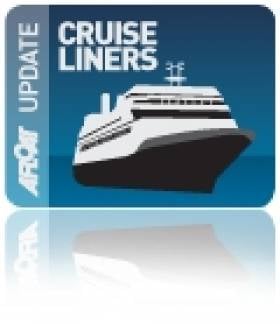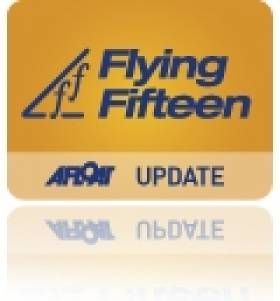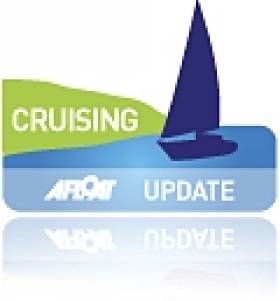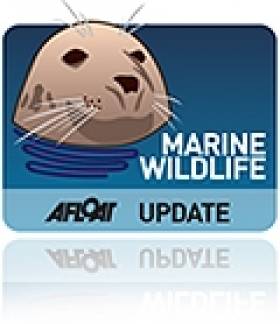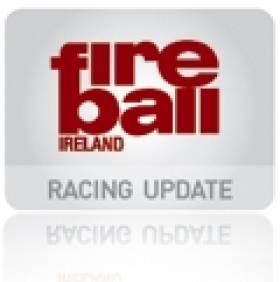Displaying items by tag: Dunmore East
Massive Fee Increases Proposed for Harbour Yacht Berths
#IRISH HARBOURS - Yachts berthing at Ireland's main fishing harbours could see their charges hiked by an incredible 800 per cent.
According to The Irish Times, Marine Minister Simon Coveney has announced a mere 21 days for comment and consultation on the draft Fishery Harbour Centres (Rates and Charges) Order 2012. The consultation document is attached to the bottom of this post and available to download as a pdf.
The proposed new charges include an annual fee of €250 per metre for yachts, which could see a 10-metre yacht currently paying €312 a year for a berth shell out as much as €2,500 annually for the same space.
Additional water and electricity costs could even see this bill rise to €3,100 - for berths that come "without proper marina facilities in most cases".
The proposals apply to the State's six fishery centres at Killybegs, Rossaveal, Dingle, Castletownbere, Dunmore East and Howth, only two of which have pontoons suitable for leisure boats.
The Irish Times has more on the story HERE.
Polar Expedition Cruiseship Heads Waterford Cruise Caller List
#CRUISE CALLS – Waterford is to welcome its first cruise caller in 2012 with the Quest (1992/1,180grt) an ice-strengthened expedition cruiseship which is to dock next month along the city-quays, writes Jehan Ashmore.
Normally she operates around the Scottish Isles, Norway, Greenland and Spitsbergen. This year she will make her itineraries for the first time around Ireland, England and Wales.
The stout looking Danish built vessel is just 50m in length, has a beam of 11m and draws 3.5m, this allows her to reach more destinations in difficult conditions. She carries around 50 passengers and a crew half that number. For images including interiors and deck plans click HERE
Quest is also scheduled to make a second call to the south-east city in May. Following both these calls another 17 cruise callers are lined up for the season which runs until September.
Among the callers are the 940 passenger capacity Crystal Symphony, the 66,000 tonnes Marina which only entered service last year, Ocean Princess (for a dry-dock slideshow click HERE) and the 1988 built Prinsendam.
Depending on the vessel's draught, the location of where they will call in Waterford estuary will vary. Aside the city quays, the other berth is in Belview and for deep drafted vessels, they take anchorage off Dunmore East. To view the full cruise call list click HERE.
Fireball Season Closes with Single Day of Racing
Arriving at the club in time for the Class AGM, the consensus was that an excellent day’s racing had been had by the 18-boat fleet, with four good races completed in excellent conditions and very tight racings.
This is manifested by the overall results which show that the winners had a 1pt margin over second place and second place had a similar 1pt margin over third.
Race wins were shared by Kenny Rumball & Teddy Byrne and Noel Butler & Stephen Oram, but Messrs McCartin & Kinsella, the 2011 National Champions, were obviously snapping at everyone’s heels with a 3, 2,2,2 series of results.
Rumball & Butler took alternate race wins with Butler getting the first one. A 1,3,1,3 scorecard at the close of Saturday saw Butler/Oram at the top of the standings with McCartin/Kinsella and Rumball/Byrne tied second overall a point astern. The pecking order thereafter was Clancy/Rowan, Boyle/Flahive, Smyth/O’Reilly, Murphy/Voye. But with a seven point gap between tied second and fourth, in reality the regatta would come down to the tope three on Sunday.
My information is that RO Harry Gallagher’s initial assessment of conditions on Sunday morning, observed from a rib on the race course, was that racing could proceed. However, by the time the committee boat got onto station the conditions had deteriorated and the few combinations who had gone out were happy to retire to the shore where boats were packed up early in driving rain and cold conditions.
With the single discard coming into play the order at the top of the fleet was changed in that Rumball/Byrne were able to get rid of a 5th, whereas Butler/Oram were only able to shed a 3rd, giving the former the title by a single point margin.
Thus the five regattas of the year have each been won by a different combination.
Butler/Oram took 2nd overall, with McCartin/Kinsella 3rd overall.
In the Silver Fleet, Luke Malcolm & Shane Diviney saw a four point margin over the next Silver Fleet boat on Saturday night shrink to a 1pt margin in the overall standings, but this was enough to win this division and claim 10th overall. Second in the Silver Fleet was Cariosa Power & Marie Barry, followed by Ben Malone & Matthew Bennion.
This regatta also concludes the season-long Travellers’ Trophy which sees Noel Butler & Stephen Oram double their margin over Barry McCartin & Conor Kinsella to two points at the tope of the log. Kenny Rumball & Seamus Moore/Teddy Byrne go into third overall, followed by Clancy/Rowan, Boyle/Flahive, Smyth/O’Reilly/Bradley, Bracken/O’Hara, Miller/Donnelly, McGrotty/Grimes & Colin/Casey. Mary Chambers & Brenda McGuire win the Silver Fleet, evidence of even further progress after attending the training sessions last season. Second and third in the Silver Fleet go to Ben Malone & Matthew Bennion and Cariosa Power & Marie Barry respectively.
The Dunmore East regatta had an international flavour with participation from Hannah Showell, from the UK sailing with Martina Michels, who flew in from Germany for the regatta, having relocated there from Ireland earlier this summer.
Regrettably, the regatta was conspicuous by the absence of representatives of the Skerries and Clontarf fleets and there was a sole representative from Killaloe.
At the AGM, the need to rebuild these fleets was identified as a challenge for the Class Association by incoming Chairman Neil Colin. The AGM also discussed the operation of the Silver Fleet where numbers have been falling in recent events despite the fact that we have seen new combinations coming into the fleet.
With the regatta season concluded the focus will now turn to the Frostbites in Dun Laoghaire Harbour. These will get underway in November and run through to March.
Container Ship Successfully Refloated in Waterford Harbour
In attendance was Bargarth, a UK-flagged tug based in Waterford and operated by Fastnet Shipping. The twin Voith & fire-fighting tug made a special appearance during the Tall Ships Races Parade of Sail on 3 July, when she put on a celebratory water-display off Dunmore East.
Samskip Eandeavour is capable of handling 812 twenty-foot equivalent containers (TEU). She was completed only this year by Damen Gorinchem Scheepswerf B.V. Foxtol in the Netherlands. The vessel is operated by an Icelandic company, Samskip which provides several container feeder-liner services between Rotterdam / Zeebrugge with Belfast, Dublin, Cork and Waterford.
After unloading and loading at Belview the 140m vessel is scheduled to dock in the Port of Cork tomorrow at the Tivoli Container Terminal before returning to Europe.
Lavery Retains South Coast Flying Fifteen Title
Dunmore East Bids TallShips Farewell
As the Russian 'A' class Mir passed the LE Aoife off Dunmore East in mid-morning, the largest tall ship of the festival headed the start of the Parade of Sail, writes Jehan Ashmore.
Crowds left their cars in fields outside Dunmore East and descended into the harbour and surrounding headlands to witness the highlight of the four-day festival. Adding to the scene were the numerous leisure-craft, yachts and intrepid kayakers that gathered to greet the procession which took some two hours to pass the fishing harbour.
No sooner had the fully-rigged ship Mir had slipped beyond the anchored naval vessel that the gaff schooner Johanna Lucretia, under full sail came closer into view. She was closely followed by the Ocean Youth Trust Scotland's Bermudan cutter Alba Explorer.

The Russian 'A' class Mir passing the LE Aoife off Dunmore East. Photo: Jehan Ashmore
Of all the 45 tallships participating the Columbian Navy's barque ARC Gloria presented the most colourful entrant. She proudly flew a large horizontal tricolor of yellow, blue and red representing the South American nation.
When it came to the turn of the Europa to pass the LE Aoife, the tug Bargarth gave a wonderful send-off with the traditional display of water jets shooting sky-high, nearly reaching the top of the three-masted barque.
Marking the tail-end of the parade was the Jubilee Sailing Trust's Lord Nelson, another barque that departed the estuary with the Hook Head Lighthouse forming a majestic backdrop.
At this stage several of the large tallships could be seen on the far horizon in preperation to the start of the first race leg of this years Tall Ships Races....next port of call Greenock!
- Waterford
- ship
- Dunmore East
- Lord Nelson
- Waterford Estuary
- LE Aoife
- Sail Training International
- Jubilee Sailing Trust
- Tug
- Hook Head
- Tall
- JOHANNA LUCRETIA
- TallShips
- Waterford Harbour
- JST
- Europa
- Fullyrigged ship
- STI
- ARC Gloria
- Hook Head Lighthouse
- Mir
- Gaff schooner
- Ocean Youth Trust Scotland
- Bermudan cutter
- Alba Explorer
- Columbian Navy barque
- Bargarth
- Fastnet Shipping
Lord Nelson Heads for Waterford
As the Tall Ship STS Lord Nelson nears Carnsore Point off Wexford this evening the barque will be one of the many vessels participating in the Waterford Talls Ships Races Festival, writes Jehan Ashmore.
Joining Lord Nelson are three other UK entrants, they are the Jean de la Lune, Pelican of London and Royalist now celebrating her 40th anniversary. Together these tallships belong to the 'A' class vessels, the largest of the tallships. The impressive array of A class vessels includes four ships alone from The Netherlands with the Astrid, Eendracht, Europa and Wylde Swan, a schooner built in 1920.
From Norway is the fully rigged tallship Christian Radich and Sorlandet. The Poles are coming with their Pogoria. Neighbouring Russia are sending their impressive 108m long Mir which has 26 sails and has a 200-strong crew though the 1987 built vessel can be sailed with just 30. The final A class entrant is from outside Europe, the Columbian 1,300 tonnes Gloria, a three-master of over 60 metres long.
In addition to this exciting line-up are the 'B' and 'C' class which in total brings 45 tallships of all shapes and sizes to the quays of the River Suir. The crystal city will be host to over 1,000 trainess and over 400 professional crew who will take part in the colourful 'Crew Parade' held on Friday. For a full list of tallships and accompanying photos go to www.waterfordtallshipsrace.ie/the-race/the-tall-ships/
The spectacle of the festival will culminate in the early hours of Sunday when the fleet departs the city and heads downriver with a 'Parade of Sail' in the estuary of Waterford Harbour. As the tallships pass offshore of Dunmore East, this will mark the start of the first race-leg to Greenock.
The famous race is organised by Sail Training International (STI) a charity established to harness sail training to develop and educate young people, regardless of nationality, culture, religion, gender or social background.
The STI can trace its roots with the creation of the Sail Training International Race Committee which organised the first race of sail training tall ships in 1956. Their website is www.sailtraininginternational.org/
Waterford Club Plans June Scilly Isles Cruise
Although Waterford Harbour Sailing Club is well known for its dinghy sailing and picturesque location it has never really been seen as a hub for sailing cruisers.
Consequently there has never been a big event for the big boats at the club but, says club secretary Rene Wubben, that's about to change this season with a Scilly Isles Rally from Dunmore East in June.
Waterford Harbour is keen to attract as many boats as possible from its own club but also others nearvy for the cruise in company that departs Dunmore East on June 16th. More info from Waterford Harbour Sailing Club. Tel: 051 383389
2011 Afloat Almanac: If you're contemplating a cruise, short coastal passage or even just studying for a Nav course this season, don't forget the 2011 edition of the Afloat Irish almanac (with Reeds Data). It covers the whole of Ireland, the Scottish, English and Welsh West coasts. Buy it online. CLICK HERE Easy!
New Humpback Whale in Irish Waters
The Irish Whale and Dolphin Group (IWDG) has reported the sighting of a humpback whale new to Irish waters.
Andrew Malcolm of the IWDG along with Martin Colfer spotted the whale just west of Dunmore East - a year after the first sightings of 'Hooky' who gave whale-watchers a treat in the early part of 2010.
Malcolm confirmed that this humpback was indeed a new addition to the Irish catalogue. He described it as behaving "in a very co-operative manner" and noted that it "regularly 'fluked' in front of the boat".
Click HERE for more on the story, including some spectaular images.
Rumball and Moran Master Big Seas in Dunmore East
Kenny Rumball and David Moran made the most of strong winds and big seas sailing to win the Fireball Munster Championships in a last race decider at Dunmore East this afternoon. In a series that was cut to just four races because of strong winds the Royal St. George pair scored an 8,1,3,1 from locals Michael Murphy and Andrew Voye counting 2,2,2,4 after a single discard. Third was national champions Noel Butler and Shane McCarthy. Today's tow races were sailed as two short windward-leeward courses. 31 competed.
Fireball Munsters, Dunmore East
1 K Rumball & D Moran RStGYC. 2.M Murphy & A Voye WHSC. 3. N Butler & S McCarthy DMYC.
Silver Fleet. 1. L Malcolm & S Divney Howth. 2. C Harken & W Walsh. 3. C Daly & M Michels Coal Harbour. Cormac



























